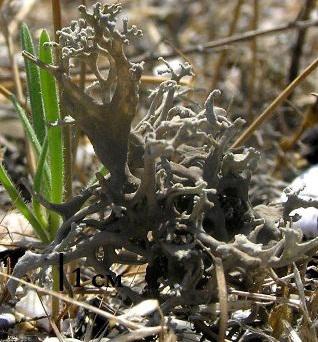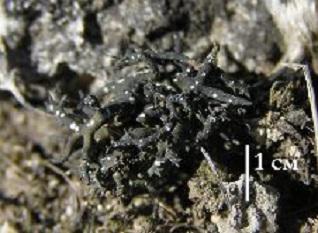Olga Nadyeina
Our aim is to revise all known in literature localities of arid lichens listed in the Red Data Book of Ukraine and discovering of new ones. Some vulnerable lichens need special taxonomy revision, because of their areals overlap with those of morphologically similar wide-distributed species. For all lichens evaluation of rarity will be access according with categories of IUCN. Another important part of planned work is distribution of conservation ideas between local populations (posters, lectures). Besides we will provide additional information about arid lichens diversity to the protected areas and prepare objectives for Micro-reserves creations in places, where rare arid lichens occur.

Ukrainian Steppes are western part of Eurasian Steppe Area, therefore some arid species have their west boundary in Ukraine or occasionally occur here after disjunction. Contrariwise, steppe landscapes in Ukraine are influenced by anthropogenic pressure (as plugging-up, network of settlements, mines etc.). Lichens are important component of steppe ecosystems and usually used as bioindicators. In a whole we can consider many species as vulnerable because of their occurrence is endangered. Scientifically based algorithm for evaluation of the species to be included in the Red Data Books was developed by IUCN (2001) and adaptation for work with lichens was proposed (Zavarzin & Muchnik, 2005). There are 27 lichens included the Red Data Book of Ukraine (1996), seven from them are arid (Aspicilia fruticosa, Aspicilia hispida, Cetraria steppae, Neofuscelia russolea, Teloschistes lacunosus, Toninia massata, Xanthoparmelia camtchadalis).

The criteria for including of those lichens were based mainly on number of scattered reports and the impression from the few experienced lichenologists. However comprehensive documentation of changes in the lichen flora of Ukraine does not exist. Mentioned situation with red-data-listed lichens in Ukraine inspire us to check all their known localities and discover a new ones. We decide to concentrate attention only on arid lichens because of steppe ecotops in Ukraine are more changed and we risk to loose knowledge about present lichen diversity and threats to lichens.
One of the main requirements for rare species evaluation according to principles of IUCN is long-term monitoring of discovered locality. Our activity will be the first step of such investigation of rare arid lichens and all localities with those species are the plots for future comparison of lichen flora changes. It will allow discussing the reasons of future changes and recognizing a main influence on lichen populations as atmospheric pollution, farming, pasturing, climate changes etc. We suppose that popularization of the lichen conservation problem will influence on people’s ecological education. It is important for us to give idea of environmental protection for local population and to reveal our actions for governmental or regional administrations.
After a time this work will be a good basis for the next steps as justification of the creation of new Reserves, for instance. This way we are sure that results of our work will be real contribution to the rare arid lichens conservation.